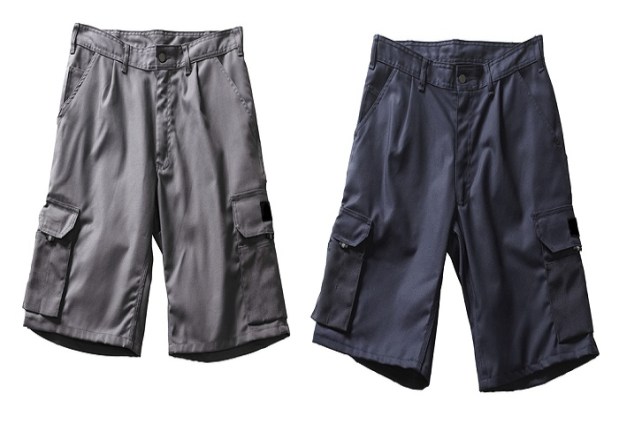The Cargo Short Debate And The Future Of Men’s Fashion

In the world of Instagram posts and Twitter updates every five seconds, plenty of people consider themselves fashionistas, regardless of their actual experience in the fashion world. This can lead to some questionable style choices — too many layers, too many frills, too few frills — but at the end of the day, it doesn’t take a Tim Gunn or a Tom Ford to point out that there’s one article of clothing that not even the most aggressive Instagram filter can fix.
Cargo shorts.
The Wall Street Journal took aim at the controversial piece of clothing in an article last week that’s since gone viral. It documented the tug of war between couples split over whether to throw the baggy shorts out of their closets or keep them hidden away so they can never be disposed of. It spurred countless reactions, ranging from the supportive to the combative, including an organized protest of sorts at WSJ offices that saw 53 male employees wear cargo shorts to work on Friday (Aug. 5).
And it also spurred plenty of comments from the cargo-clad public — the most interesting of which sidestepped the question of the shorts’ fashion value in lieu of a utilitarian philosophy.
“Wallet, cellphone, keys (including today’s monstrous car keys): Where do they go if you don’t have a lot of pockets?” went one email received by Nicole Hong, the journalist behind the article. “I don’t like or dislike them, but they’re a necessity in the summer. No, I won’t carry a purse. And no, I don’t want to be fashionable.”
No, I don’t want to be fashionable.
While the internet outrage machine continues to spin on and on over whether cargo shorts are or aren’t an appropriate summer garment, retailers should take a particular interest in comments like these. Cargo shorts as a consumer apparel item have been around since the 90s, when they were actually considered (however misguidedly) as indeed fashionable additions to a man’s wardrobe.
Fast forward a decade and a half, and their fashion value has completely eroded, at least with the mainstream fashionistas controlling the next season’s products. However, the scorn and ridicule that segment of the apparel world seems to hold for them hasn’t done much to thin the herds of men swaddling their legs with extra pockets.
Why? Because as a slew of responses to Hong’s article shows, there are still plenty of men out there that make purchasing decisions on apparel for reasons unrelated to how good it looks.
There are, of course, plenty of men out there who are willing to spend their hard-earned dollars on clothes considered stylish, but can apparel retailers feeling the crunch of competitors and thin profit margins really afford to ignore the needs of a demographic? “Needs” might be a problematic word, especially since cargo-wearing men aren’t necessarily standing up for the apparel item’s virtues and strengths; they just see it as the most utilitarian option out there, and their lack of interest in spending money on a product’s ephemeral fashion value isn’t going to suddenly change.
To an extent, this is the dynamic that men’s apparel subscriptions are leveraging. Bombfell, Trunk Club and others match male consumers with personal stylists to take all the guess work (and, coincidentally, leg work) of finding the sharpest-looking clothes. While the aim of these services is to look more stylish, the experience of them for the consumer is nothing like the slog of digging through clothing racks or making multiple trips to the fitting room.
There is an opportunity for apparel retailers here, if they’re quick enough to seize it. While there are sure to be a few hardline cargo shorts enthusiasts out there, there are just as many, if not more, men who wear them almost by default. If the fashionable quality of the shorts is not the determining factor in whether a man buys a pair of cargo shorts, then the ease with which they’re tried on, they’re worn and they keep does.
This is a matter of product design and consumer experience. And if apparel retailers can find a way to address it — be it through an as-comfortable alternative that still eschews traditional fashion precepts or through tweaks to the shopping experience that makes fashion-seeking less painful for the red-blooded American male — they’ll have to start wearing cargo shorts of their own to hold all their profits.
